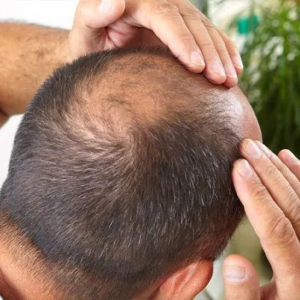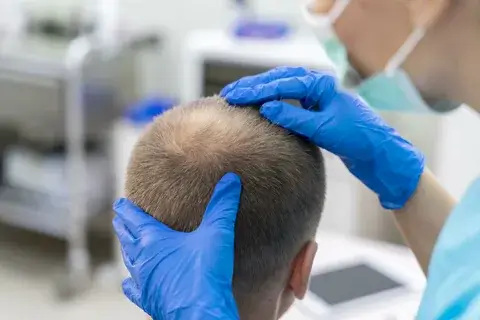A Crown Hair Transplant in Abu Dhabi is a popular procedure for those looking to restore hair in the crown area of the scalp, which is a common area for hair thinning or baldness. It’s an effective solution for both men and women who have experienced hair loss, especially at the top or back of the head. However, just like any surgical procedure, it requires time for the body to heal properly and for the transplanted hair to begin growing. In this article, we’ll explore the typical recovery time after a crown hair transplant, including what to expect during each stage of recovery.
What is a Crown Hair Transplant?
A crown hair transplant is a type of follicular unit transplantation (FUT) or follicular unit extraction (FUE) that targets the crown area of the scalp. This area is known for its challenging hair loss patterns, and a transplant here can help create a fuller, more natural-looking hairline. During the procedure, hair follicles are either extracted from the donor area (usually the back or sides of the head) and then transplanted into the crown.
While the procedure itself can take several hours depending on the extent of the transplant, the focus is on restoring density in the crown, a region that is particularly sensitive to thinning. After the surgery, the healing and recovery process is an essential part of achieving the best possible results.

Factors Influencing Recovery Time
The recovery time after a crown hair transplant can vary based on several factors, including:
- Type of Procedure: The type of hair transplant performed (FUT vs. FUE) can influence recovery time. FUE generally has a shorter recovery period as it involves smaller incisions and less tissue removal than FUT.
- Extent of the Transplant: The size of the crown area being treated and the number of grafts being transplanted will affect recovery. A more extensive procedure may require a longer recovery time.
- Individual Healing Factors: Each person’s body heals differently. Factors like age, overall health, and lifestyle choices can impact the healing process.
- Post-Procedure Care: Proper aftercare plays a major role in how quickly you recover. Following your surgeon’s advice regarding washing your hair, medications, and avoiding physical activity can significantly affect the recovery timeline.
What to Expect During Recovery
The recovery process after a crown hair transplant can be broken down into several stages. Here’s what you can expect during each phase:
Immediate Aftercare (First 2-3 Days)
In the first few days following your hair transplant, you may experience some swelling, redness, and minor discomfort in the treated area. The newly transplanted grafts will also be tender, and there may be some scabbing around the transplanted follicles.
Here’s what you can do to manage the initial recovery period:
- Avoid Touching the Transplanted Area: Refrain from touching or scratching the scalp, as this can dislodge the newly transplanted follicles.
- Sleeping Position: It’s important to sleep with your head elevated for the first few days to reduce swelling and prevent pressure on the transplanted area.
- Medications: You may be prescribed pain relievers and anti-inflammatory medications to manage discomfort and swelling. Some patients are also given antibiotics to reduce the risk of infection.
The First Week
The first week after the transplant is when most of the noticeable side effects occur, including scabbing, swelling, and redness. Swelling typically peaks within the first 48 hours and then starts to subside.
Here’s what you can expect in the first week:
- Scabbing and Crusting: The transplanted area may develop scabs that typically fall off within the first week.
- Hair Shedding: It’s normal for some of the transplanted hair to shed during the first week. This is a natural part of the process known as “shock loss.” Don’t be alarmed, as the hair follicles will remain intact, and new hair will begin to grow after a few months.
- Limited Physical Activity: Avoid any strenuous physical activity, such as exercise or heavy lifting, during the first week to minimize the risk of complications or dislodging the hair follicles.
Two to Four Weeks
By the two- to four-week mark, most of the initial healing will have occurred. Swelling and redness will continue to decrease, and the scabs will have fallen off. However, the crown area may still look a little raw or uneven during this time.
Things to keep in mind during this stage:
- Continued Shedding: The shedding of the transplanted hair may continue, but this is expected and not a sign of failure. The hair follicles are adjusting to their new location.
- Gentle Hair Care: You can begin washing your hair more gently with a mild shampoo, but be cautious not to rub the transplanted area aggressively.
- Minimal Pain or Discomfort: Most individuals experience very little pain after the first week. Any mild discomfort can usually be managed with over-the-counter pain medication.
One to Three Months
At this stage, the recovery process becomes less noticeable, and the majority of the initial swelling, redness, and scabbing will have disappeared. However, the hair follicles are still in their early stages of growth.
Here’s what to expect:
- Hair Growth: The transplanted hair follicles will begin to sprout new hair, but the new strands may be thin and fragile at first. Full hair growth may not be noticeable until 4-6 months after the procedure.
- No More Swelling or Scabbing: By now, any swelling or scabbing should be completely gone, and the treated area should look significantly improved.
Three to Six Months
After three to six months, you will begin to see more noticeable results as the hair continues to grow thicker and longer. During this period, the transplanted hair will have undergone a full cycle of growth, shedding, and regrowth.
Things to keep in mind:
- Hair Growth Becomes Visible: The hair that started growing at the three-month mark should now be more visible. It may not be fully thick yet, but the new growth will begin to fill in the crown area.
- Continuous Improvement: Hair density and thickness will continue to improve over time. By the six-month mark, you will likely start to see the final shape and fullness of your new hairline.
Six to Twelve Months
The full results of your crown hair transplant will begin to emerge after six to twelve months. By this time, the transplanted hair should be fully grown, and the final aesthetic results will be visible.
What to expect:
- Fuller Hair: The transplanted area will appear fuller and denser, giving you a more natural, youthful look.
- Final Results: By twelve months, you should see the final density and coverage in the crown area. Some people may continue to experience slight thickening of hair up to 18 months after the procedure.
How to Speed Up the Recovery Process
While you can’t rush your body’s natural healing process, there are several steps you can take to support a quicker recovery:
- Follow Post-Operative Instructions: Your surgeon will provide specific instructions on how to care for your scalp after the procedure. Following these guidelines carefully will help ensure that your recovery progresses smoothly.
- Avoid Sun Exposure: Protect the transplanted area from direct sun exposure, as UV rays can irritate the scalp and hinder healing.
- Eat a Healthy Diet: Eating a balanced diet rich in vitamins and minerals will support hair growth and overall healing.
- Manage Stress: Stress can impact the healing process. Taking steps to relax and reduce stress can improve your recovery time.
Conclusion
The recovery time after a crown hair transplant typically spans several months. Most of the initial healing takes place within the first 1 to 2 weeks, while visible hair growth and final results become apparent after 6 to 12 months. The key to a successful recovery is following post-procedure care instructions and being patient as your hair follicles go through the regrowth process. By the end of the first year, you should see the full benefits of your crown hair transplant, enjoying a fuller, thicker, and more youthful appearance.

